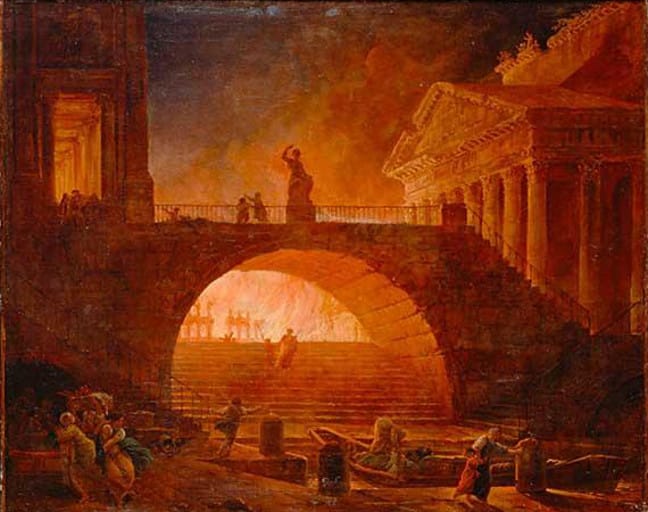The Great Fire of Rome and Nero’s fiddle: an egregious historical distortion.
The emperor did not "fiddle while Rome burned." It's a bit more complicated than that.

One thousand, nine hundred and sixty years ago today, on July 19, 64 CE, a great fire broke out in the city of Rome. The conflagration seems to have begun in a commercial district near the Circus Maximus and quickly spread to the rest of the city. For all our popular visions of Rome as a city of grand stone buildings and marble columns, the reality is that most of it was made of wood. July 19 was a hot and windy night, and the winds quickly spread sparks from building to building, a situation similar to the Great Fire of London in 1666. Ultimately, three of Rome’s 14 districts were completely destroyed, with most of the others suffering damage one way or another. It’s anyone’s guess how many people died, but there were probably hundreds of casualties, maybe thousands.
As most people know—or think they know—this fire is famous for being the one during which the tyrannical emperor Nero played his fiddle while Rome burned. People still use the expression “fiddling while Rome burns” today. As with many sayings or phrases that purport to come from history, there is no truth to this “meme,” if one could call it that. Nero did not own a fiddle, did not play it while Rome burned, and probably wasn’t even there.


